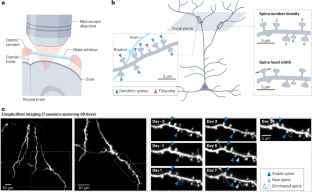速效抗抑郁剂干预诱发的结构性神经可塑性。
IF 26.7
1区 医学
Q1 NEUROSCIENCES
引用次数: 0
摘要
重度抑郁障碍(MDD)是一种情绪障碍,其病理生理学特征之一是前额叶皮层的兴奋性突触受损。耐人寻味的是,氯胺酮、电休克疗法和非侵入性神经刺激等不同类型的治疗方法具有相当快的抗抑郁效果(数天或数周内),似乎都能增强神经的可塑性。然而,将抗抑郁干预与兴奋性突触功能的恢复联系起来的可塑性形式和机制仍然未知。在这篇综述中,我们重点介绍了过去15年的临床前研究,这些研究表明氯胺酮和迷幻药能促使大脑皮层锥体神经元树突棘的生长。我们比较了各种精神活性药物对神经元重接线的纵向影响,并强调了快速起效和持续时间过程是潜在速效抗抑郁药物的显著特征。此外,我们还考虑了目前对药物诱发体内结构可塑性认识的不足之处。我们还讨论了利用突触重塑来理解其他抗抑郁干预措施(如重复经颅磁刺激)的前景。最后,我们得出结论:神经结构可塑性可以为精神活性药物和抗抑郁干预措施的神经生物学作用提供独特的见解。本文章由计算机程序翻译,如有差异,请以英文原文为准。


Structural neural plasticity evoked by rapid-acting antidepressant interventions
A feature in the pathophysiology of major depressive disorder (MDD), a mood disorder, is the impairment of excitatory synapses in the prefrontal cortex. Intriguingly, different types of treatment with fairly rapid antidepressant effects (within days or a few weeks), such as ketamine, electroconvulsive therapy and non-invasive neurostimulation, seem to converge on enhancement of neural plasticity. However, the forms and mechanisms of plasticity that link antidepressant interventions to the restoration of excitatory synaptic function are still unknown. In this Review, we highlight preclinical research from the past 15 years showing that ketamine and psychedelic drugs can trigger the growth of dendritic spines in cortical pyramidal neurons. We compare the longitudinal effects of various psychoactive drugs on neuronal rewiring, and we highlight rapid onset and sustained time course as notable characteristics for putative rapid-acting antidepressant drugs. Furthermore, we consider gaps in the current understanding of drug-evoked in vivo structural plasticity. We also discuss the prospects of using synaptic remodelling to understand other antidepressant interventions, such as repetitive transcranial magnetic stimulation. Finally, we conclude that structural neural plasticity can provide unique insights into the neurobiological actions of psychoactive drugs and antidepressant interventions. Rapid-acting antidepressant interventions, such as ketamine and psilocybin, are thought to enhance neural plasticity. This Review outlines evidence of synaptic deficits in individuals with major depressive disorder before discussing in vivo longitudinal studies of antidepressant-evoked structural plasticity in rodents. Translational opportunities, research gaps and challenges are also considered.
求助全文
通过发布文献求助,成功后即可免费获取论文全文。
去求助
来源期刊

Nature Reviews Neuroscience
NEUROSCIENCES-
自引率
0.60%
发文量
104
期刊介绍:
Nature Reviews Neuroscience is a multidisciplinary journal that covers various fields within neuroscience, aiming to offer a comprehensive understanding of the structure and function of the central nervous system. Advances in molecular, developmental, and cognitive neuroscience, facilitated by powerful experimental techniques and theoretical approaches, have made enduring neurobiological questions more accessible. Nature Reviews Neuroscience serves as a reliable and accessible resource, addressing the breadth and depth of modern neuroscience. It acts as an authoritative and engaging reference for scientists interested in all aspects of neuroscience.
 求助内容:
求助内容: 应助结果提醒方式:
应助结果提醒方式:


